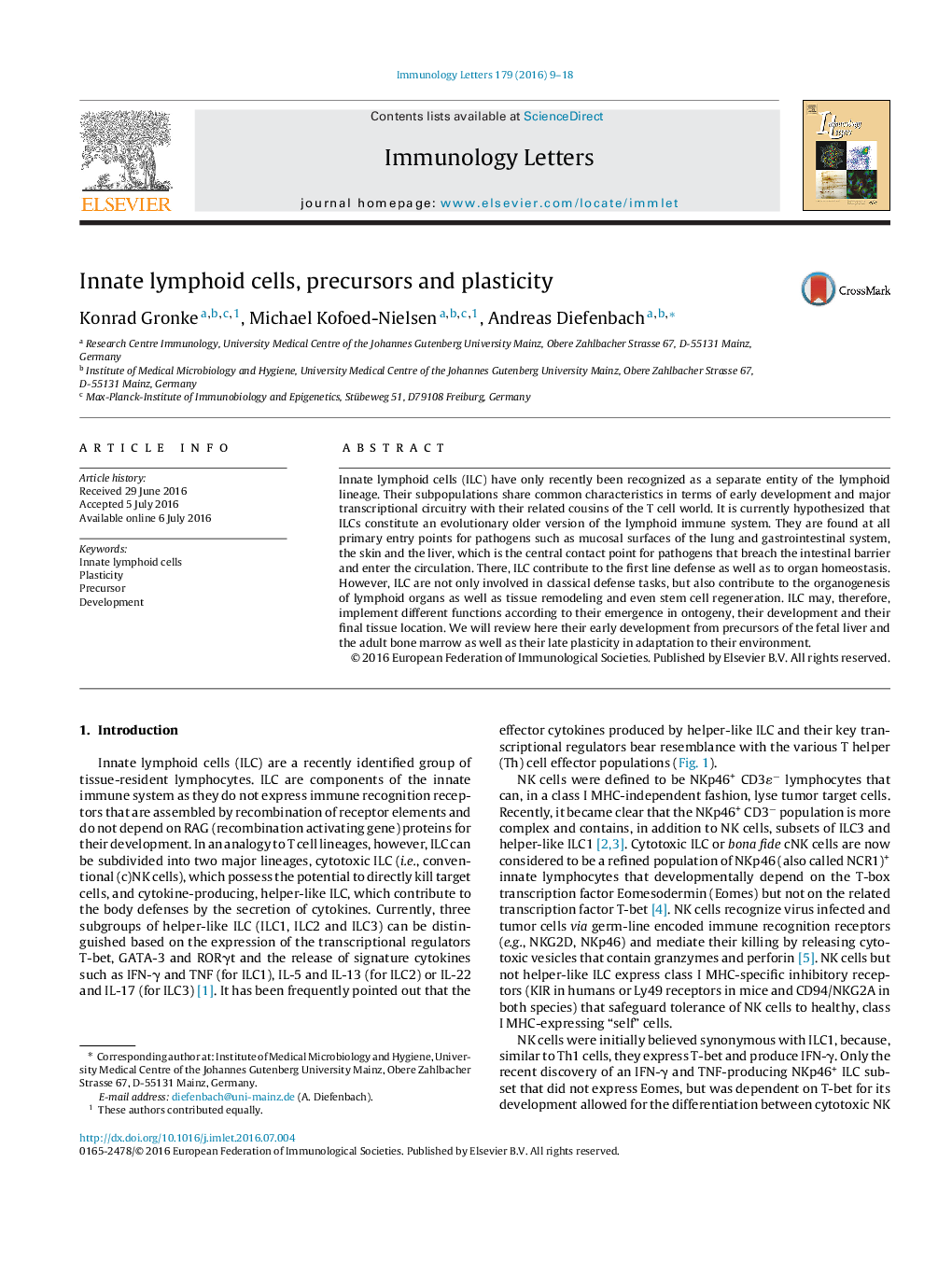| کد مقاله | کد نشریه | سال انتشار | مقاله انگلیسی | نسخه تمام متن |
|---|---|---|---|---|
| 5666626 | 1591547 | 2016 | 10 صفحه PDF | دانلود رایگان |
- Innate Lymphoid Cells can be separated into Cytotoxic and Helper-Like ILCs.
- All helper-like ILCs derive from a common progenitor.
- Id2, Tox, Nfil3 and TCF-1 play an essential role during early steps of development.
- ILC3 and ILC2 can express transcription factors of other lineages.
Innate lymphoid cells (ILC) have only recently been recognized as a separate entity of the lymphoid lineage. Their subpopulations share common characteristics in terms of early development and major transcriptional circuitry with their related cousins of the T cell world. It is currently hypothesized that ILCs constitute an evolutionary older version of the lymphoid immune system. They are found at all primary entry points for pathogens such as mucosal surfaces of the lung and gastrointestinal system, the skin and the liver, which is the central contact point for pathogens that breach the intestinal barrier and enter the circulation. There, ILC contribute to the first line defense as well as to organ homeostasis. However, ILC are not only involved in classical defense tasks, but also contribute to the organogenesis of lymphoid organs as well as tissue remodeling and even stem cell regeneration. ILC may, therefore, implement different functions according to their emergence in ontogeny, their development and their final tissue location. We will review here their early development from precursors of the fetal liver and the adult bone marrow as well as their late plasticity in adaptation to their environment.
Journal: Immunology Letters - Volume 179, November 2016, Pages 9-18
